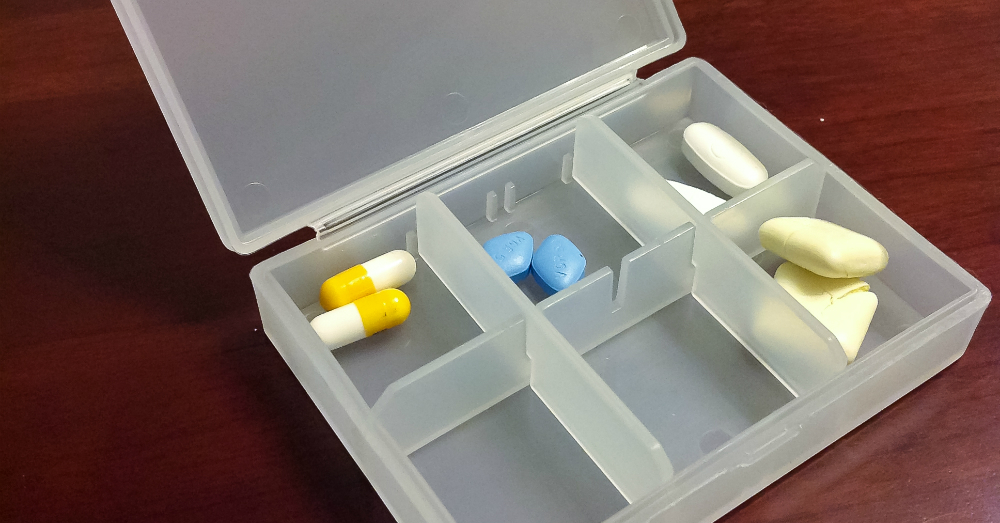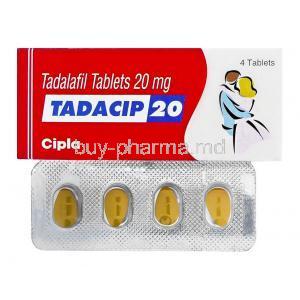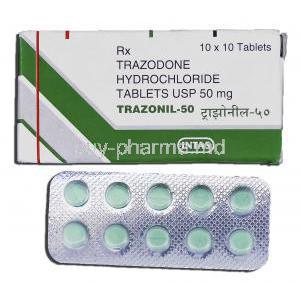Milnacipran
- Introduction to Milnacipran
- Composition and Chemical Characteristics of Milnacipran
- Uses of Milnacipran
- Off-Label Uses of Milnacipran
- How Milnacipran Works
- Dosage and Administration of Milnacipran
- Side Effects of Milnacipran
- Common Side Effects of Milnacipran
- Interaction of Milnacipran with Other Medications
- X. Warnings and Precautions Associated with Milnacipran
- XI. Contraindications for Milnacipran Use
- XII. Careful Administration of Milnacipran
- XIII. Important Precautions When Using Milnacipran
- XIV. Administration of Milnacipran to Special Populations
- XV. Overdose and Management
- XVI. Storage Recommendations for Milnacipran
- XVII. Handling Precautions for Milnacipran
Introduction to Milnacipran
A. Overview of Milnacipran as a Pharmaceutical Agent
Milnacipran, an effective pharmacological treatment, is mainly used as an antidepressant. It targets the noradrenergic systems, making it a representative medication in the serotonin norepinephrine reuptake inhibitors (SNRIs).
B. The History and Development of Milnacipran
Milnacipran was developed in the 20th century to target the complex nature of mood disorders. Extensive clinical trials and rigorous evaluations have confirmed its effectiveness, leading to its approval by bodies worldwide.
C. Milnacipran's Place in Modern Medicine
In the realm of medicine, Milnacipran plays a significant role, especially in the treatment of persistent conditions such as fibromyalgia that does not respond well to conventional drug therapies.
Composition and Chemical Characteristics of Milnacipran
A. Active Ingredients and Molecular Structure
Milnacipran contains an ingredient known as milnacipran hydrochloride. This ingredient is composed of carbon atoms, resulting in two enantiomeric forms. The molecular structure of this substance plays a role in its pharmacodynamic properties.
B. Pharmacological Classification
Milnacipran falls under the category of SNRI in the field of pharmacotherapy. This classification is crucial for comprehending how it works as an antidepressant and analgesic medication.
Uses of Milnacipran
A. Approved Indications for Milnacipran
Milnacipran is a medication that acts as a serotonin and norepinephrine reuptake inhibitor. It was first used as an antidepressant, but has been shown to significantly improve pain and physical function in people with fibromyalgia. Milnacipran is one of three drugs currently approved by the FDA for the treatment of fibromyalgia 12. The exact mechanism of action of milnacipran in treating fibromyalgia is unclear 1.
Chronic pain is a condition that lasts longer than three to six months. It can develop in various ways, including from injury or illnesses. When pain lasts beyond three to six months, treatment focuses on the central nervous system, which includes the brain and spinal cord. Treatment is based on fast relief from the pain and involves medical management, movement therapy, and learning specific coping strategies 34. Opioids such as morphine, acupuncture, and electrical stimulation are used to provide pain relief 3. Acetaminophen, ibuprofen, morphine, codeine, hydrocodone, methocarbamol, and diclofenac are some of the medications used to manage chronic pain 3.
1: Hopkins Lupus Center 2: MedlinePlus Drug Information 3: Mayo Clinic Health System 4: MSN Health
B. Milnacipran in Psychiatric Disorders
Milnacipran is a serotonin and norepinephrine reuptake inhibitor that has been shown to be efficacious in treating major depressive disorder (MDD) 1. However, it is not approved for the clinical treatment of MDD in the US, but it is in other countries 2. Milnacipran has been reported to be efficacious in the treatment of anxiety symptoms in patients with schizophrenia and schizoaffective disorder 3. However, it has not been evaluated in randomized controlled trials in the treatment of anxiety 4.
4: Taijin kyofusho - Wikipedia 3: SciELO - Brasil - Efficacy of milnacipran in treating anxiety symptoms … 2: Milnacipran - Wikipedia 1: Milnacipran Monograph for Professionals - Drugs.com
Off-Label Uses of Milnacipran
A. Exploring the Spectrum of Off-Label Therapy with Milnacipran
B. Evidence and Research Supporting Off-Label Applications
Pain; Studies based on observation have indicated that Milnacipran may be effective in reducing the discomfort caused by nerve related pain. Irritable Bowel Syndrome (IBS); The relief of symptoms in IBS suggests that it can help regulate disorders. Migraine prevention; There is a growing body of evidence supporting its usefulness, in reducing the frequency and severity of migraine attacks.
References:
Milnacipran for the Treatment of Chronic Neuropathic Pain: A Systematic Review and Meta-Analysis
Milnacipran for the Treatment of Irritable Bowel Syndrome: A Systematic Review and Meta-Analysis
How Milnacipran Works
A. Mechanism of Action: Serotonin-Norepinephrine Reuptake Inhibition
Milnacipran works by preventing the reabsorption of serotonin and norepinephrine, increasing their presence in the synapses. This is crucial for its effects.
B. The Neurochemical Pathways Affected by Milnacipran
This agent carefully adjusts the pathways primarily impacting the transmission of neurotransmitters in the serotonergic and noradrenergic circuits of the central nervous system.
C. Clinical Efficacy and Mechanism Insights
The effectiveness of Milnacipran in settings is closely tied to its distinctive mechanism, which has been extensively studied through research on its pharmacodynamics.
Dosage and Administration of Milnacipran
A. Recommended Dosage Guidelines
The typical procedure for administering medication begins with an escalation plan, followed by a regular dosage that depends on how the patient responds to and tolerates the treatment.
B. Titration Schedule and Dose Adjustment
Titration is carefully adjusted to minimize any effects, considering the individual's kidney and liver function.
C. Methods of Administration
The usual way to take medication is by mouth. It is recommended to take it with food to improve how well your stomach can handle it.
Side Effects of Milnacipran
A. Overview of Common Side Effects
The list of side effects varies from mild to severe, with common disruptions including feeling sick, having a headache, and excessive sweating.

B. Systemic Side Effects and Adverse Reactions
The systemic effects of Milnacipran can affect organ systems, so it is essential to monitor them closely.
C. Managing Side Effects in Clinical Practice
To effectively manage a situation requires a combination of adjusting doses using therapies and educating patients.
Common Side Effects of Milnacipran
A. Gastrointestinal Side Effects
Digestive issues such as indigestion, difficulty passing stool, and vomiting can be improved by making changes to your diet.
B. Central Nervous System (CNS) Side Effects
Cognitive and nervous system symptoms, like feeling lightheaded or having trouble sleeping, require medication dosage adjustment.
C. Cardiovascular Side Effects
Regular monitoring is necessary to address concerns such as elevated blood pressure and heart rate.
Interaction of Milnacipran with Other Medications
A. Potential Drug Interactions and Consequences
Using medications together can lead to harmful interactions. It's essential to be cautious when combining them with monoamine oxidase inhibitors (MAOIs) serotonergic agents or anticoagulants.
B. Interactions with Over-the-Counter Medications and Supplements
Everyday over-the-counter products and supplements must be carefully considered to avoid any potential adverse interactions with other medications.
X. Warnings and Precautions Associated with Milnacipran
A. Cardiovascular Warnings
Patients who have preexisting cardiovascular conditions need to be closely monitored when they are undergoing treatment with Milnacipran. This medication has the potential to cause blood pressure and irregular heart rhythms. Hence, it's essential to regularly check their blood pressure and pulse rate to detect any potential cardiac complications early on.
B. Psychiatric Warnings
Considering the effects of Milnacipran, it is advisable to exercise caution when prescribing it to patients who have a history of bipolar disorder and psychosis. Although cases of mania and hallucinations have been reported in some individuals, they are rare occurrences.
C. Suicidality and Antidepressant Drugs
Administration of antidepressants like Milnacipran has been linked to a likelihood of experiencing suicidal thoughts, especially among young adults. It is crucial to remain vigilant about any mood changes and be proactive in seeking psychiatric evaluations.
XI. Contraindications for Milnacipran Use
A. Absolute Contraindications
The simultaneous use of monoamine oxidase inhibitors (MAOIs) is strictly forbidden because it carries a risk of causing a sudden increase in blood pressure, known as a hypertensive crisis if someone has a known sensitivity or allergy to Milnacipran or any ingredient in the medication, it is not recommended for them to use it.
B. Relative Contraindications
Individuals who have uncontrolled narrow-angle glaucoma, severe kidney problems, or significant liver dysfunction are advised to avoid taking Milnacipran unless the potential benefits greatly outweigh the risks.
XII. Careful Administration of Milnacipran
A. Monitoring for Serotonin Syndrome
Serotonin syndrome is a condition that requires urgent medical attention and may lead to the need to stop the use of Milnacipran. It is marked by symptoms such as body temperature, unstable autonomic functions, and abnormal muscle activity.
B. Adjustments for Renal and Hepatic Impairment
Patients who have issues with their kidneys or liver might need to have their dosage adjusted. It is important to check liver enzymes and kidney function to determine the appropriate dosage for each individual.
C. Considerations for Discontinuation Syndrome
It is advisable to reduce the dosage of Milnacipran to minimize the chances of experiencing discontinuation syndrome. This condition is typically associated with symptoms such as dizziness, changes in perception, and fluctuations in emotional well-being.
XIII. Important Precautions When Using Milnacipran
A. Pregnancy and Lactation Concerns
Milnacipran should only be taken during pregnancy if the advantages outweigh the risks to the unborn baby. It is essential to exercise caution when using Milnacipran while breastfeeding as it may cause adverse effects on nursing infants.
B. Elderly Patients
Elderly individuals may sometimes experience heightened sensitivity to Milnacipran, which often requires an approach when determining the dosage. Furthermore, considering the probability of using multiple medications among this age group, it becomes even more crucial to be aware of potential adverse interactions between drugs.
C. Young Adults and Adolescents
The use of Milnacipran in individuals under the age of 18 has not been thoroughly studied to determine its safety and effectiveness. It is crucial to exercise caution when considering the administration of Milnacipran to younger populations. A careful evaluation of the risks and benefits should be conducted.
XIV. Administration of Milnacipran to Special Populations
A. Administration to Elderly Patients
Because elderly individuals often experience changes in how their bodies process and respond to medications, it is advisable to tailor the treatment plan for Milnacipran by starting with a dose and closely monitoring its effectiveness.
B. Administration to Pregnant Women and Nursing Mothers
When considering whether to give Milnacipran to women or nursing mothers, it is crucial to thoroughly evaluate the need for the medication and prioritize minimizing any potential impact on the health of the fetus or newborn.
C. Administration to Children
It is not advised to administer Milnacipran to patients. If it becomes necessary to use it, a personalized approach should be taken, with monitoring, for any behavioral changes and growth indicators.
XV. Overdose and Management
A. Recognizing Symptoms of Overdosage
Signs of taking much Milnacipran can include excessive drowsiness, a rapid heartbeat, and seizures. It's crucial to have a sense of awareness to identify and treat an overdose quickly.
B. Emergency Management and Antidotal Therapies
If someone takes too much Milnacipran, it is essential to provide immediate support and treatment for the symptoms. There is no medication to counteract the effects of Milnacipran, so it is crucial to intervene early and closely monitor the person affected.
XVI. Storage Recommendations for Milnacipran
A. Proper Storage Conditions
Milnacipran should be kept at room temperature, away from moisture and heat. To maintain the effectiveness of the medication, it is essential to store it in its container tightly sealed to prevent contamination.

B. Stability and Shelf Life
The effectiveness of Milnacipran depends on storing it and paying attention to expiration dates to ensure its therapeutic benefits. It's essential to follow the recommended storage conditions to maintain its stability.
XVII. Handling Precautions for Milnacipran
A. Safe Handling by Healthcare Providers
Healthcare professionals should follow safety measures when dealing with Milnacipran, including practicing good hygiene and minimizing unnecessary contact.
B. Disposal and Environmental Concerns
It is essential to follow the guidelines for disposing of Milnacipran to prevent environmental contamination. Any medication that is unused or expired should be disposed of in a way that prioritizes taking care of our environment.































